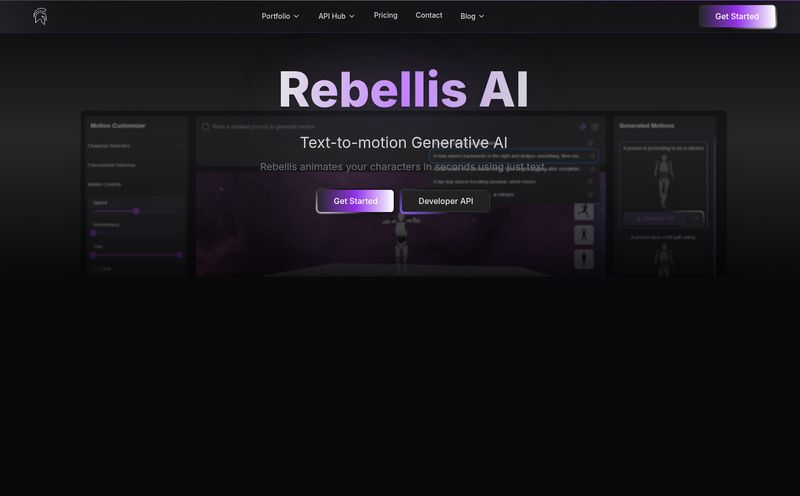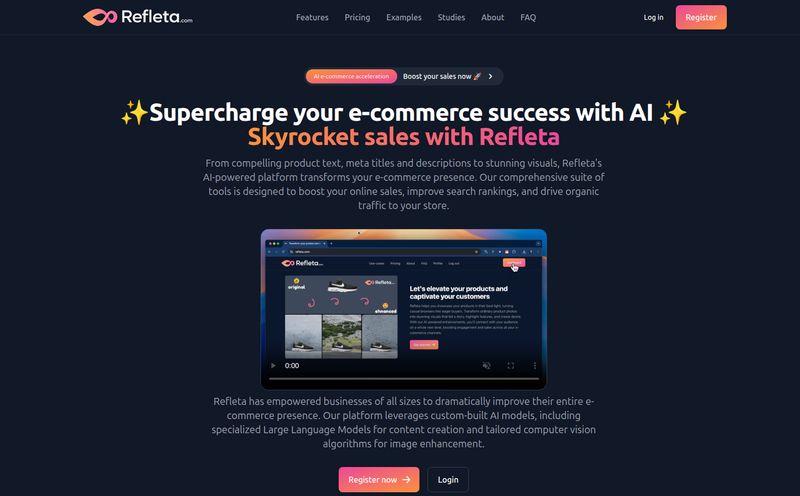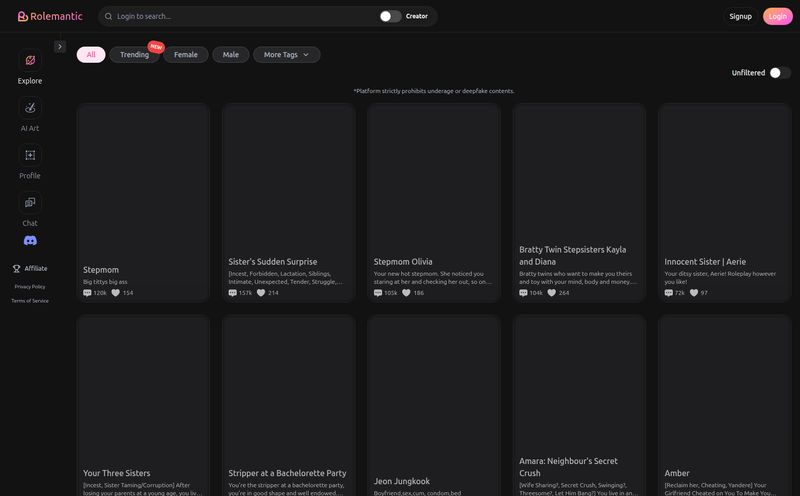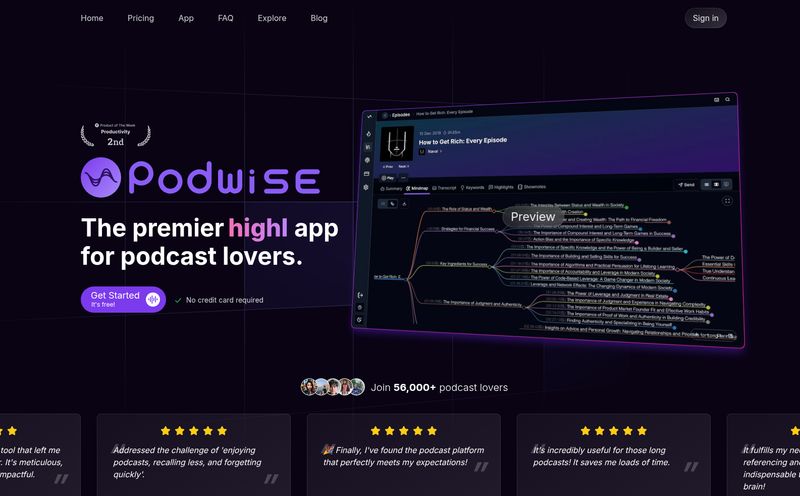Let’s have a little heart-to-heart. For years, my creative process looked like a digital tornado had ripped through my desktop. I had mood boards on Pinterest, sketches in Procreate, project tasks in Asana, client feedback buried in a hundred-mile-long Slack thread, and the actual design files living in a hopelessly disorganized Dropbox folder. Sound familiar?
Every new project felt like starting from scratch, not with a blank canvas, but with a dozen blank canvases scattered across ten different apps. The friction was real. The momentum, constantly broken. We've been promised a million tools to make our lives easier, but most just add another tab to our already-crowded browsers.
So when I first heard about Fabrie, I was skeptical. Another "all-in-one" platform? Sure. But then I saw the tagline: "The most creative AI on a whiteboard." That got my attention. It wasn’t just about putting all your stuff in one place; it was about making that place smarter. And after spending some serious time with it, I can tell you… its a pretty interesting take on the whole thing.
So, What Exactly Is Fabrie?
At its core, Fabrie is an online collaborative whiteboard. Think Miro or FigJam, but with a few very important twists. It’s an infinite canvas where you and your team can throw ideas around, create mind maps, and build storyboards in real-time. But calling it just a whiteboard is like calling a smartphone just a telephone. It misses the point entirely.
Fabrie’s secret sauce is the deep integration of AI tools and a database-like structure, right on the canvas. It's designed by designers, for designers, and it understands that our process is rarely linear. It’s a space where your messy, initial brainstorm can fluidly evolve into a structured, data-driven plan without ever having to hit `Cmd+Tab` to switch apps.
The Features That Actually Change the Game
A feature list is just a list. What matters is how those features work together to solve real problems. Here’s what stood out to me.
The AI-Powered Whiteboard Is the Star of the Show
Okay, the AI. Let's get to it. In Fabrie, the AI isn’t some separate pop-up window or a clunky plugin. It lives right there with you on the board. You can select an area and just… ask it to generate things. Need some quick visual concepts for a "cozy cabin in the woods" mood board? Just type it and watch as a dozen images appear. Need to write some marketing copy for a new feature? It can do that too.
This is where it feels less like a tool and more like a creative partner. It’s not going to do your job for you, but it’s fantastic at smashing through creative blocks and handling the grunt work of ideation. It turns the terrifying blank page into a playground of possibilities.
Real Collaboration, Not Just Shared Screens
We’ve all experienced the pain of “collaboration” that involves emailing files back and forth with names like `Final_Design_v2_Johns-Edits_FINAL_use-this-one.psd`. Fabrie’s real-time collaboration is as smooth as you'd expect from a modern web app. You can see your teammates' cursors flying around, adding sticky notes, and tweaking designs simultaneously. It creates a sense of a shared studio space, even if your team is scattered across continents.
When a Whiteboard Meets a Spreadsheet
This, for me, is the unsung hero of Fabrie. You can create tables—actual databases—directly on your whiteboard. And the cards or images on your board can be synced to that data. Imagine you're creating a storyboard for a video. Each visual card on your board can be linked to a row in a table that contains the script, shot number, location, and status. Change the status in the table to "Approved," and the card on the board updates automatically. It’s brilliant. It connects the visual, right-brain chaos of a mood board with the organized, left-brain structure of a project plan.
My Brutally Honest Take on Using Fabrie
No tool is perfect, right? Here’s where I think Fabrie shines and where it stumbles a bit.
The Good Stuff (The Real Advantages)
The unified workflow is, without a doubt, the biggest win. The magic isn't just the AI or the database feature; it's that they all live in the same house. The friction I talked about earlier? It genuinely melts away when your ideation, data management, and presentation are all part of the same continuous flow. I've spent less time exporting, importing, and switching contexts, and more time actually thinking and creating. It's a huge mental relief.
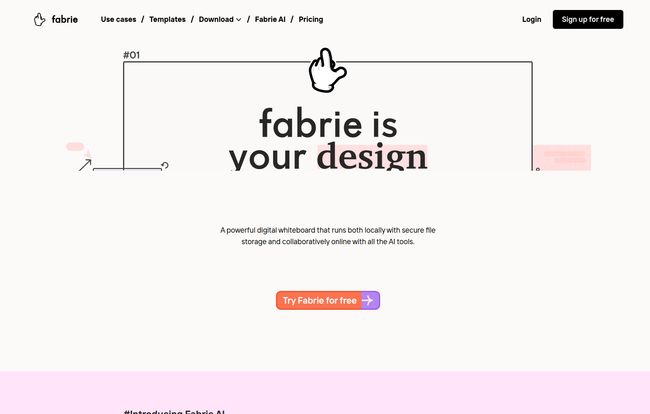
Visit Fabrie
The Not-So-Good Stuff (Let's Be Real)
There's a bit of a learning curve. While the interface is clean, this isn't a simple sticky note app. To get the most out of it, you need to understand how the databases and synced cards work. It’s not hard, but it’s not instantaneous either. You'll need to invest an hour or two to really get it.
Naturally, it’s an online platform, so you're dependent on an internet connection for collaboration. And the free plan is quite limited—it's more of a trial than a long-term solution. You only get 3 editable files, which you’ll burn through in a single afternoon of brainstorming. Also, the upcoming Fabrie Lite version, which works locally, won't have collaboration. That makes it a bit of a niche choice, perhaps for the solo designer who values privacy and speed above all else.
Let's Talk Money: Fabrie Pricing Explained
The pricing structure is pretty straightforward and caters to different types of users. I’ve broken it down here, along with my take on who each plan is for.
| Plan | Price | Best For |
|---|---|---|
| Free | $0 /seat/month | New users wanting to try all the features. A perfect sandbox, but the 3-file limit means you can't build your castle here. |
| Basic | $9 /seat/month | Freelancers and small teams. You get unlimited files and 100GB of storage, which is generous. The 300 AI credits/month might feel a bit tight if you lean on it heavily. |
| Professional | $29 /seat/month | Teams going all-in on an AI-assisted workflow. The unlimited AI credits are the main draw, along with better permissions and more storage. |
| Fabrie Lite | Coming Soon | The solo creator who wants a fast, secure, offline version without collaborative features. |
Who Is Fabrie Actually For?
So, who should drop what they're doing and give Fabrie a spin? In my opinion, it hits the sweet spot for small to mid-sized creative teams. Think design studios, marketing teams, and product squads. It’s for groups who are tired of the constant app-switching and want a central hub for the entire creative lifecycle—from that first spark of an idea to the final presentation.
Product designers, UX/UI folks, architects, and even content strategists will find something to love here. If your work involves both visual brainstorming and structured data, Fabrie might just be the thing you didn't know you needed.
Conclusion: Is This the Future of Design Collaboration?
I'm always wary of anything that claims to be the "future." The future is messy and unpredictable. But Fabrie is, without a doubt, one of the most compelling steps in the right direction I've seen in a long time. It doesn't just give you a blank canvas; it gives you a smarter one. It acknowledges that the creative process is a beautiful, chaotic dance between wild ideas and organized execution.
It's not perfect. It asks for a little bit of your time to learn its ways. But the payoff—a smoother, more integrated, and frankly, more joyful creative process—is well worth the investment. It’s one of the few tools I’ve tested recently that made me genuinely excited to start a new project.
Frequently Asked Questions
- Is Fabrie better than Miro or FigJam?
- It's different. If you just need a simple whiteboard for sticky notes, Miro or FigJam might be quicker to pick up. But if you want deep AI integration and database functionality built into your canvas, Fabrie is in a class of its own.
- How good is the AI in Fabrie?
- It's surprisingly effective for ideation and content generation. It's great for generating mood board images, writing draft copy, or summarizing notes. It's an assistant, not a replacement for a human designer.
- Can I use Fabrie for free?
- Yes, there's a free plan. It's great for trying out all the features, but it's limited to only 3 editable files, so it's not suitable for ongoing professional work.
- What is Fabrie Lite?
- Fabrie Lite is an upcoming desktop version of the app that works locally on your computer. It's designed for solo use, offering more security and faster loading from local storage, but it does not include real-time collaboration features.
- Is Fabrie difficult to learn?
- There is a slight learning curve, especially with the database and synced card features. However, if you're familiar with other design tools, you should feel comfortable within a couple of hours. The platform offers templates to help you get started.
- Can I manage my entire design project in Fabrie?
- For many projects, yes. Between the whiteboard for brainstorming, the database for tracking tasks and assets, and the presentation mode for sharing, you can manage a significant portion of your workflow without leaving the app.
